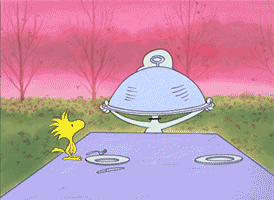Happy Earth Day! It has been 44 years since the first Earth Day April 22nd, 1970. Since the start of Earth Day, the Earth has seen both environmentally disastrous and progressive events. Our planet is now home to over 7 billion people and the population is growing by 200,000 each day. Carbon dioxide levels are approaching 400 ppm, levels never experienced by humans. The rapid growth of developing countries has established a new class of polluters that will increase the levels of greenhouse gas emissions in the atmosphere. In the United States, we have endured the harsh effects of a planet on the brink – droughts, strong storms, and merciless winter weather.

So, what does Earth Day mean today? Some see it as the birth of the modern environmental movement. Others see it as a an environmental hoax that limits economic productivity (we think they’re wrong!). Regardless, the creation of Earth Day spurred significant pieces of environmental legislation that positively affected American health and preserved our natural treasures.
The History of Earth Day
The 1960s were an era of social and environmental activism during which the seeds of the modern environmental movement were sown. Concerns over air and water pollution, waste disposal, smog, radiation and other environmental hazards became part of the American political rhetoric. Environmental activism was supported by the general public instead of being the pet cause of the rich, as it had been in previous eras.

Roosevelt and Muir at Yosemite National Park
In 1962, conservationist and biologist Rachel Carson published Silent Spring. Silent Spring drew attention to the issue of DDT and harmful effects of synthetic pesticides. Carson found that the pesticides used to kill bugs were harming the biosphere because they devastated animals that were doing no harm to crops. “As crude a weapon as the cave man’s club, the chemical barrage has been hurled against the fabric of life – a fabric on the one hand delicate and destructible, on the other miraculously tough and resilient, and capable of striking back in unexpected ways. These extraordinary capacities of life have been ignored by the practitioners of chemical control who have…no humility before the vast forces with which they tamper.” While other previous scientific studies proved Carson’s findings true, only she had the courage to stand up against the industry. Due in large part to Carson’s influence, the Environmental Protection Agency was established in 1970. In 1972, the EPA issued a cancellation order for DDT based on the adverse environmental effects of its use on wildlife and human health. Today DDT is classified as a probable human carcinogen by US and International authorities.
Americans and many other countries have suffered from environmental pollutants. The use of unregulated coal power plants after the WWII cost the lives of many. In Pennsylvania alone, over 600 people had to be hospitalized due to sulfur dioxide smogs; 20 people died. In London, the use of coal power plants drenched the city in a thick cloud of smog that cost the lives of about 12,000 people. These environmental and human health disasters led to the Clean Air Act of 1963, which allowed the government to regulate air toxins on a national level.

The Great Smog of 1952
The Johnson and Nixon administrations advanced environmental issues more than any other administration in the history of the United States. Some of the legislative decrees include:
- Dederal pesticide controls: This increased the power of the federal government and the Department of Agriculture to oversee the status of dangerous chemicals.
- Wilderness Act: The government was granted the authority to define the “wilderness” and establish millions of acres of preserved land. The definition of the wilderness according to the federal government: “A wilderness, in contrast with those areas where man and his own works dominate the landscape, is hereby recognized as an area where the earth and its community of life are untrammeled by man, where man himself is a visitor who does not remain.”
- Solid Waste Act: Provided funding and grants for research programs relating to solid waste and its disposal.
- Water Quality Act: The act ordered states to develop water quality standards and goals for improved water quality.
- Highway Beautification Act: This act removed junk yards and other environmental eyesores and encouraged scenic development along national highways.
- Fish and Wildlife Conservation Protection Act: The Secretary of the Interior was granted the power to protect endangered species and to take precautions to prevent their extinction. The Johnson version of this act gave the Secretary the authority to protect 35 mammal and 30-34 bird species.
- Clean Water Restoration Act: Provided communities with funding to reach standards established by the Water Quality Act of 1965. This also provided incentives for states to have purity standards for interstate waters.
- Endangered Species Act: This ordered the reversal of a species’ extinction whatever the cost.
- Wild and Scenic Rivers Act: This act provided a system and gave the government the authority to protect national rivers. Today there are over 1,000 miles of protected rivers.
There are many other acts and parks that were established by presidential administrations during the birth of the modern environmental movement. The culmination of the movement was the establishment of the Environmental Protection Agency by Nixon in 1970. The new agency was given the authority to manage the U.S. environmental policy and enforce its laws.

In 1970, Senator Gaylord Nelson (D-WI) created Earth Day as a way to promote environmental awareness on the national level. It was observed by 20 million Americans. Nelson was the single co-sponsor of legislation requesting the ban of DDT, and supported the idea of removing phosphates from detergents. He believed the need for environment legislation was as great as the need for an atomic defense policy.
Nelson said that Earth Day should be observed by Americans in any way the want to. On the first Earth Day, Nelson stated, “Our goal is not just an environment of clean air and water and scenic beauty. The objective is an environment of decency, quality and mutual respect for all other human being and all living creatures.”

The Influence of Earth Day and Its Future
The Earth is in peril. Drought and desertification are affecting many parts of the world. Rising sea levels are beginning to displace many. The Earth is fragile, but the obstacles we have overcome to preserve our planet have been numerous.
On Earth Day 44, fears of contaminated water or air are rare. Electric cars are starting to populate our roads. The per capita energy use for Americans has been decreasing and the use of renewable energy has been increasing. Carbon dioxide emissions for the US are down by 10% since 2005. The fastest growing energy section in the world comes from renewable sources.
Today is a day to remember and to embrace the future of our planet. Remember all those people who had the courage to speak out against a polluting establishment in order to give all of us a cleaner world. Embrace a green future where everyone has the right to a clean environment. Greenohm will also reflect on Earth Day. The modern environmental movement is the reason why our company exists and why we can provide you with rebates to reduce your energy consumption.
Celebrate the Earth in your own way! Plant new flowers or trees, ride or walk to work, lower your meat consumption, turn off the lights, pick up trash, educate others! Always remember, this is our planet and the planet of future generations. It’s our duty to preserve it!

John Muir Redwoods
“When one tugs at a single thing in nature, he finds it attached to the rest of the world.” John Muir

Happy Earth Day 44!
Additional Reading
https://www.aldoleopold.org/AldoLeopold/almanac.shtml
http://www.pbs.org/wgbh/americanexperience/films/earthdays/player/
http://www.huffingtonpost.com/2013/11/04/new-york-city-in-20-years_0_n_4182025.html















 First we will ask you for your zip code. Based on this, our system will find utility companies that offer rebates for a programmable thermostat in your neck of the woods.
First we will ask you for your zip code. Based on this, our system will find utility companies that offer rebates for a programmable thermostat in your neck of the woods.

